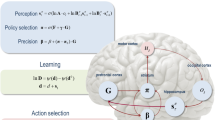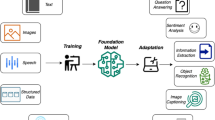Abstract
We present a semiparametric generative model for supervised learning with structured outputs. The main algorithmic idea is to replace the parameters of an underlying generative model (such as a stochastic grammars) with input-dependent predictions obtained by (kernel) logistic regression. This method avoids the computational burden associated with the comparison between target and predicted structure during the training phase, but requires as an additional input a vector of sufficient statistics for each training example. The resulting training algorithm is asymptotically more efficient than structured output SVM as the size of the output structure grows. At the same time, by computing parameters of a joint distribution as a function of the full input structure, typical expressiveness limitations of related conditional models (such as maximum entropy Markov models) can be potentially avoided. Empirical results on artificial and real data (in the domains of natural language parsing and RNA secondary structure prediction) show that the method works well in practice and scales up with the size of the output structures.
Similar content being viewed by others
References
Bosco. C., Lombardo, V., Vassallo, D., Lesmo, L.: Building a treebank for Italian: a data-driven annotation schema. In: Proceedings of the Second International Conference on Language Resources and Evaluation LREC, pp. 99–106, Athens, 31 May–2 June 2000
Collins, M.: Parameter estimation for statistical parsing models: theory and practice of distribution-free methods. In: New Developments in Parsing Technology, pp. 19–55. Kluwer Academic, Norwell (previusly IWPT 2001) (2004)
Cortes, C., Mohri, M., Weston, J.: A general regression technique for learning transductions. In: Proceedings of the 22nd International Conference on Machine Learning, pp. 153–160, Bonn, 7–11 August 2005
Johnson, M.: PCFG models of linguistic tree representations. Comput. Linguist. 24(4), 613–632 (1998)
Knudsen, B., Hein, J.: RNA secondary structure prediction using stochastic context-free grammars and evolutionary history. Bioinformatics 15(6), 446–454 (1999)
Lafferty, J.D., McCallum, A., Pereira, F.C.N.: Conditional random fields: probabilistic models for segmenting and labeling sequence data. In: ICML ’01: Proceedings of the Eighteenth International Conference on Machine Learning, pp. 282–289. Morgan Kaufmann, San Francisco (2001)
Leslie, C., Eskin, E., Noble, W.: The spectrum kernel: a string kernel for svm protein classification. In: Proc. of the Pacific Symposium on Biocomputing, pp. 564–575, Lihue, 3–7 January 2002
Manning, C.D., Schütze, H.: Foundations of Statistical Natural Language Processing. MIT, Cambridge (1999)
McAllester, D.: Generalization bounds and consistency for structured labeling. In: Bakir, G., Hofmann, T., Schölkopf, B., Smola, A., Taskar, B., Vishwanathan, S.V.N. (eds.) Predicting Structured Data. MIT, Cambridge (2007)
McCallum, A., Freitag, D., Pereira, F.C.N.: Maximum entropy markov models for information extraction and segmentation. In: Langley, P. (ed.) ICML, pp. 591–598. Morgan Kaufmann, San Francisco (2000)
Menchetti, S., Costa, F., Frasconi, P.: Weighted decomposition kernels. In: Proceedings of the Twenty-second International Conference on Machine Learning (ICML’05), pp. 585–592. ACM, New York (2005)
Sakakibara, Y., Brown, M., Hughey, R., Mian, I.S., Sjölander, K., Underwood, R.C., Haussler, D.: Stochastic context-free grammars for tRNA modeling. Nucleic Acids Res. 22, 5112–5120 (1994)
Taskar, B., Guestrin, C., Koller, D.: Max-margin markov networks. In: Advances in Neural Information Processing Systems (NIPS 2003), Vancouver, 13–18 December 2004
Tsochantaridis, I., Joachims, T., Hofmann, T., Altun, Y.: Large margin methods for structured and interdependent output variables. J. Mach. Learn. Res. 6, 1453–1484 (2005)
Weston, J., Chapelle, O., Elisseeff, A., Scholkopf, B., Vapnik, V.: Kernel dependency estimation. Adv. Neural Inf. Process. Syst. 15, 873–880 (2003)
Zhu, J., Hastie, T.: Kernel logistic regression and the import vector machine. In: Advances in Neural Information Processing Systems (NIPS 2001), pp. 1081–1088, Vancouver, 3–8 December 2001
Author information
Authors and Affiliations
Corresponding author
Rights and permissions
About this article
Cite this article
Costa, F., Passerini, A., Lippi, M. et al. A semiparametric generative model for efficient structured-output supervised learning. Ann Math Artif Intell 54, 207–222 (2008). https://doi.org/10.1007/s10472-009-9137-6
Received:
Accepted:
Published:
Issue Date:
DOI: https://doi.org/10.1007/s10472-009-9137-6




